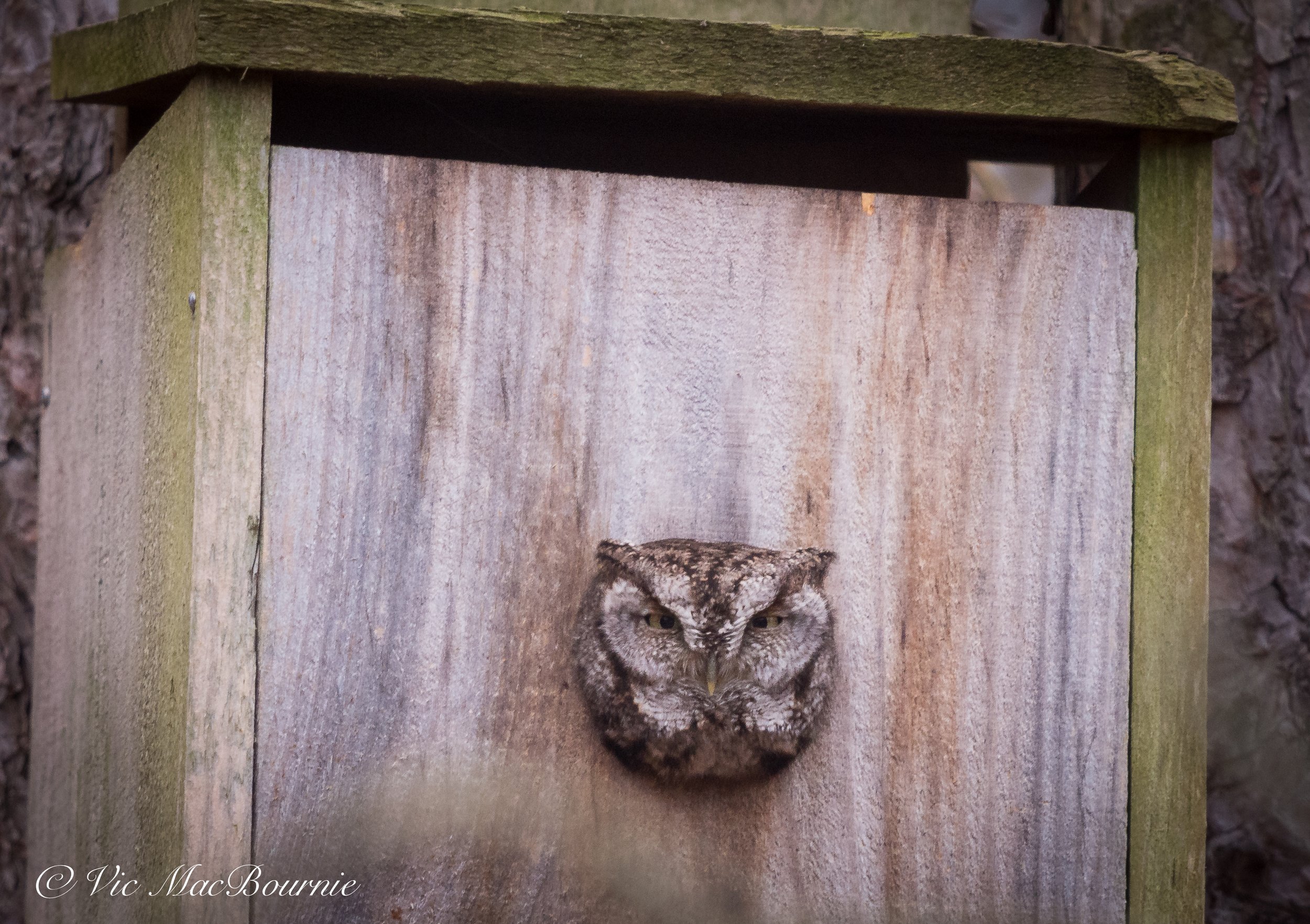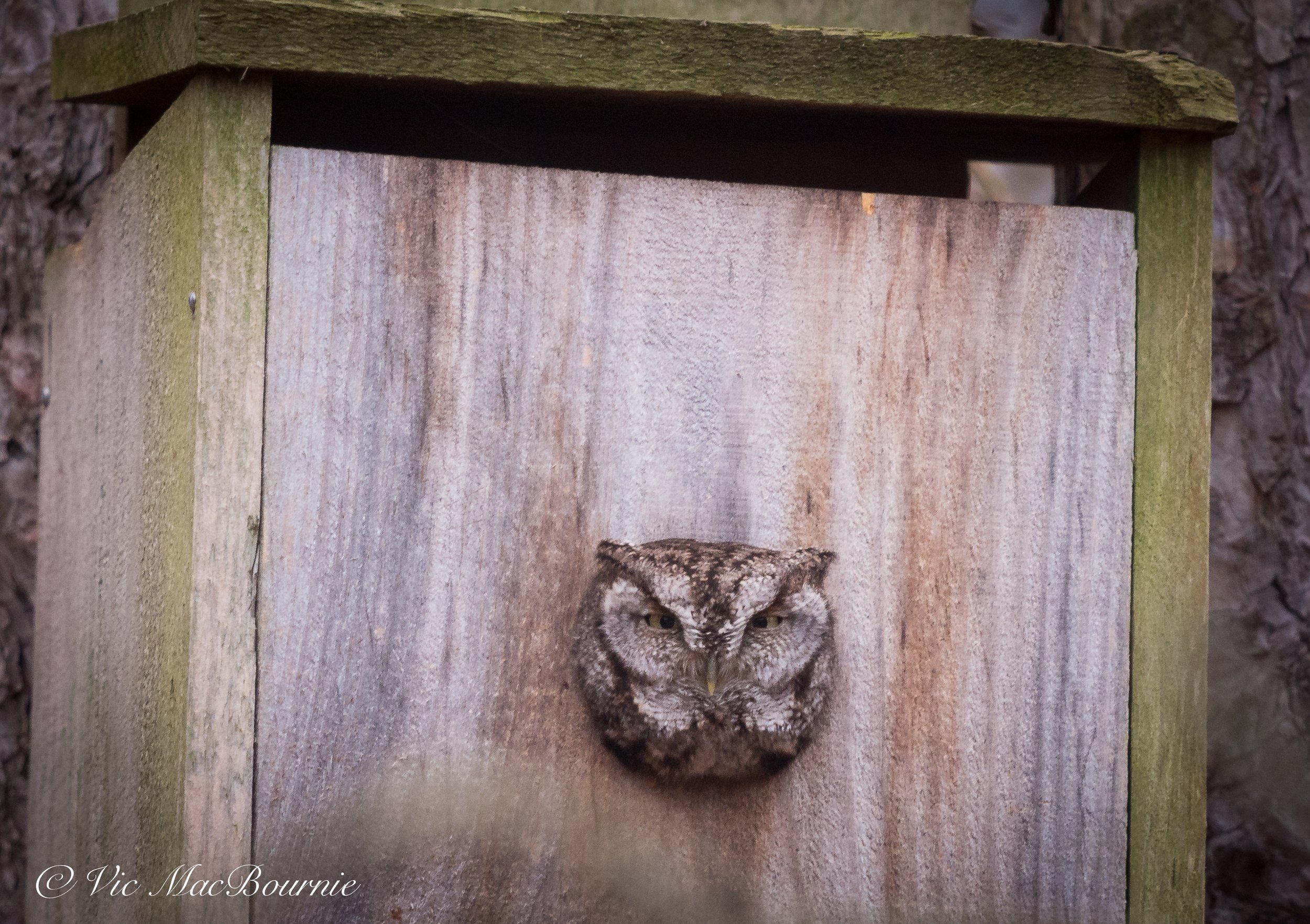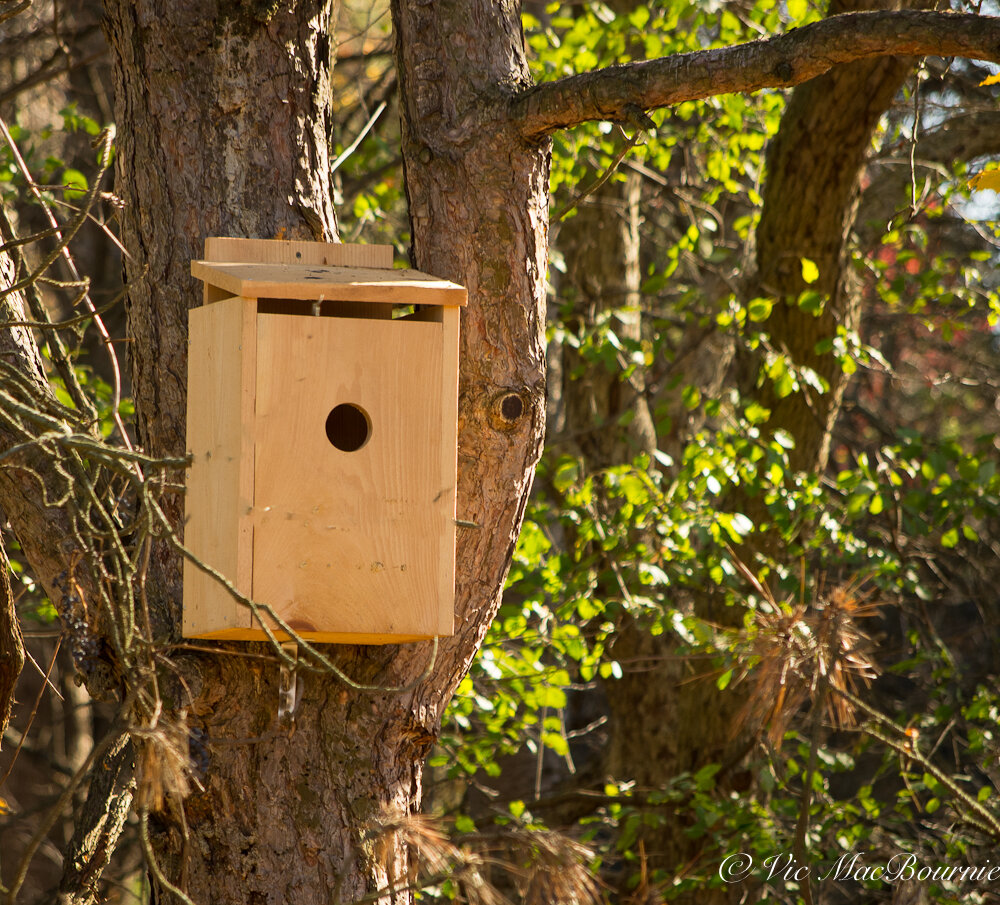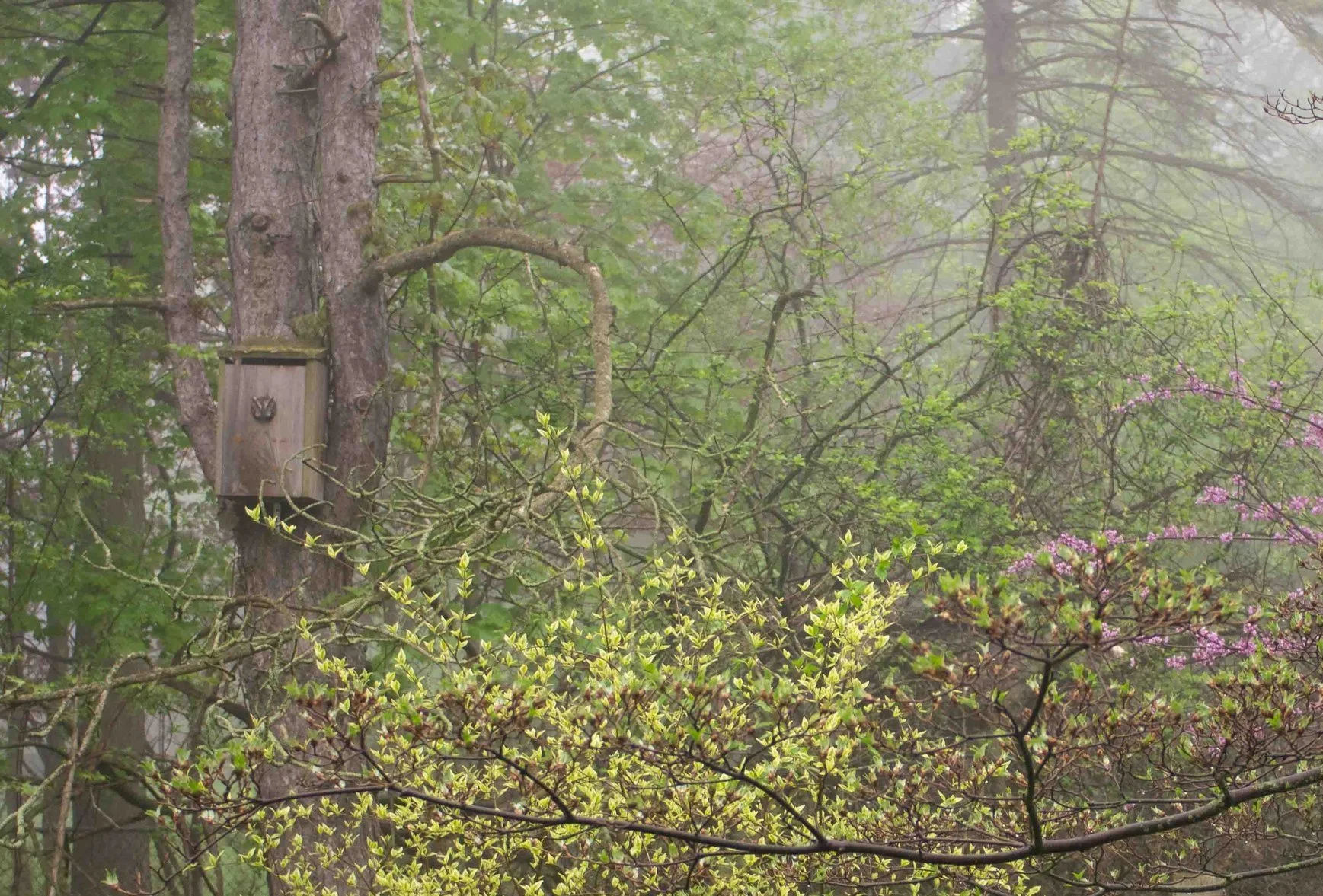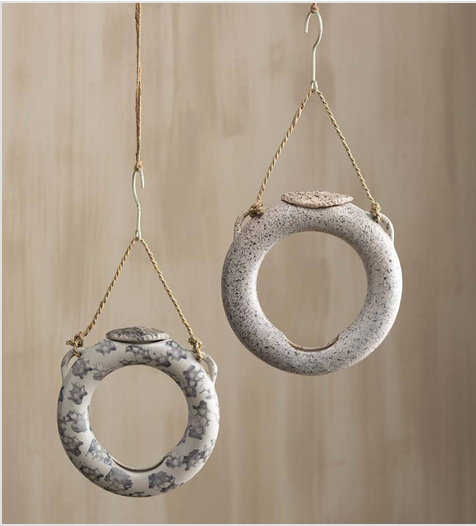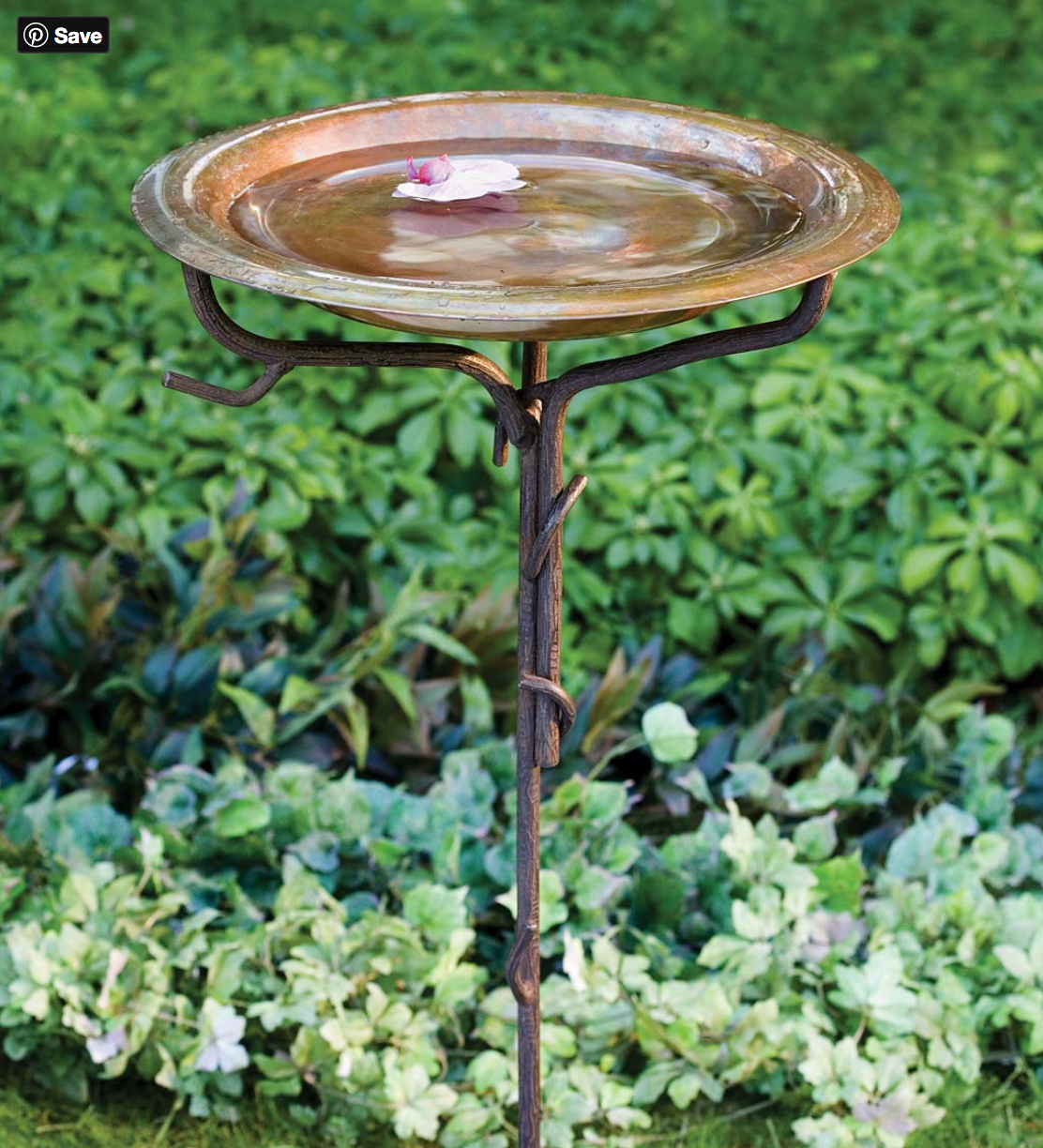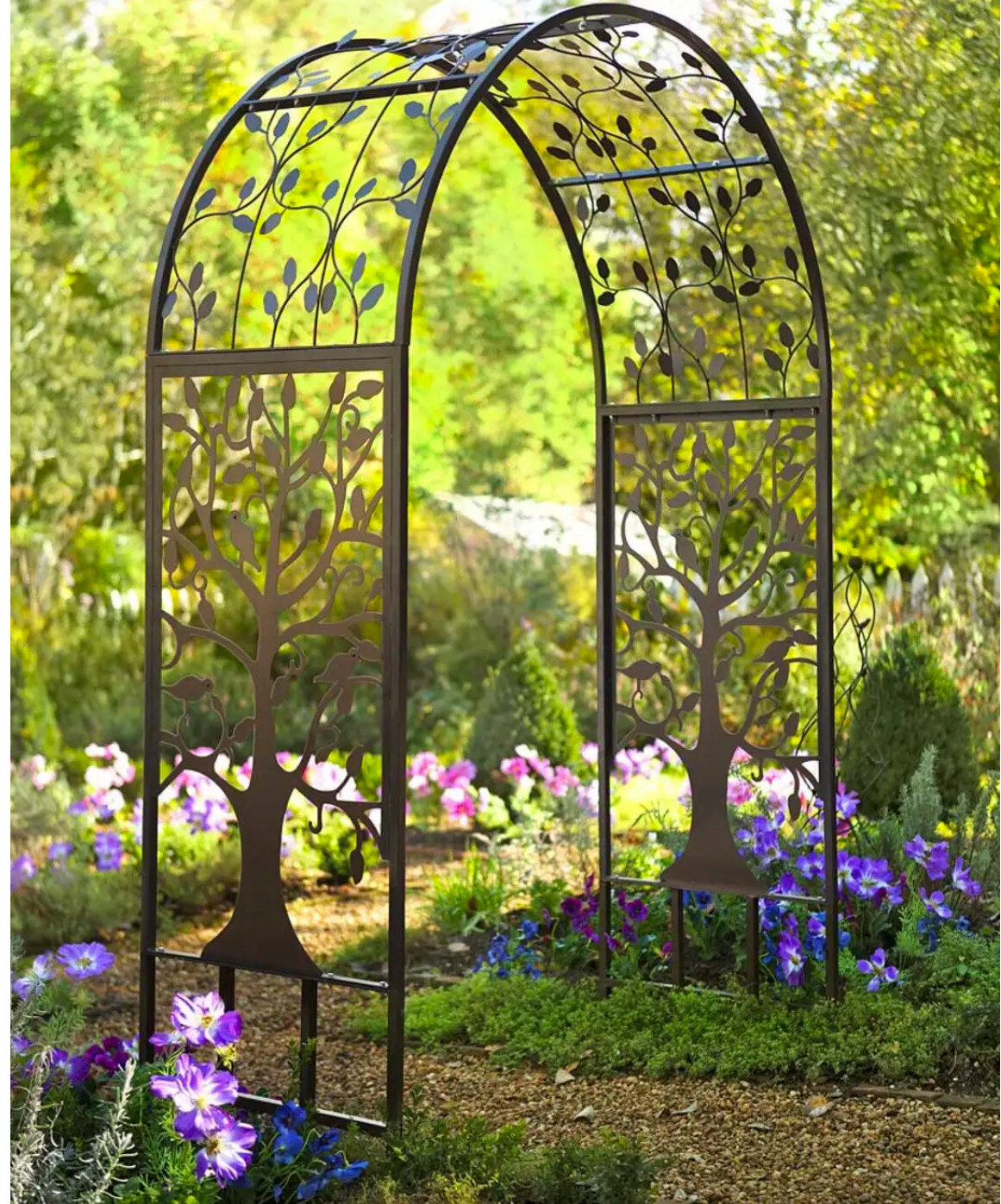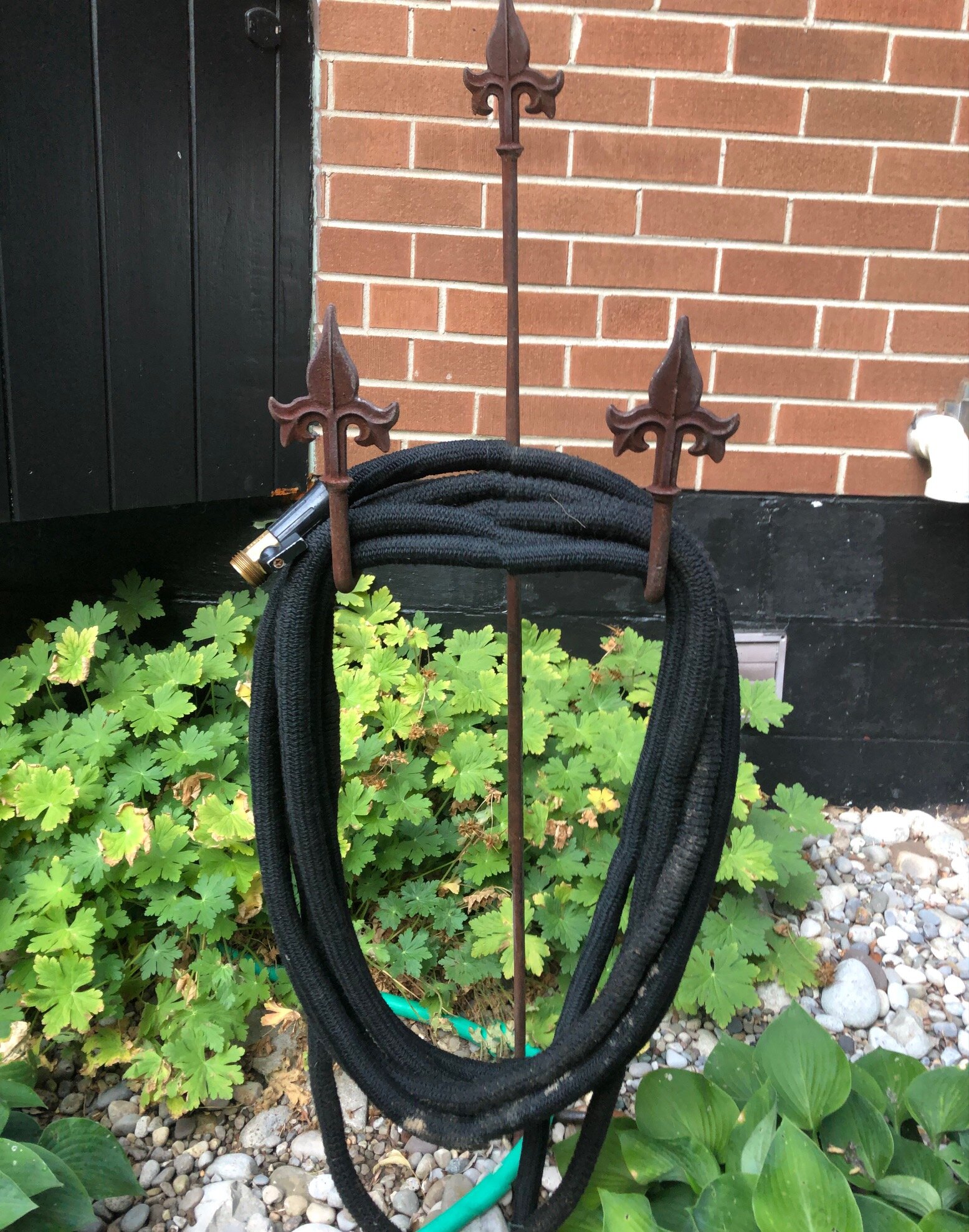How to attract screech owls to your woodland wildlife gardens
Screech owls are popular visitors to suburban woodland gardens and are beginning to increase their numbers in Canada, in part, because more homeowners are installing nesting boxes on their properties. Screech owls are among the smallest in North America but they eat more than their share of mice and rats making them a favourite for woodland gardeners.
What do screech-owls sound like? Where do they live?
I know they’re here. I’ve heard them. Many times.
And now, a few years later, I’ve finally seen one in the garden. I suspect they’ve been around all this time but they are not all that easy to see. Sundown and sunset are the most likely times to see them, but even then their natural camouflage makes them almost impossible to spot.
Plenty of nights when I take our dog Holly out before bedtime, we’ve heard them calling out – screeching, if you will. It’s a little eerie at times when you are not expecting it, but it’s music to my ears now that I can identify the call. (Link to screech owl vocalizing.)
It’s not exactly a screech, more a whinny like a horse and trilling, but it could be mistaken for a Screech if you’re alone in the middle of the night in a forest.
Eastern Screech owls are not large.
Many people even mistake the robin-sized nocturnal woodland owl with short ear-tufts and yellow eyes, for fledgling Great Horned owls when they notice them in their neighbourhood. Not that they are easy to notice in the first place. Not only do they blend into the forest, their nocturnal habits make them a rare sighting if you are not making a conscious effort to find them.
These small owls, however, can be more common in your neighbourhood than most may realize.
Where do screech owls live?
The Eastern Screech Owl, a common species found east of the Rockies, can be spotted in a variety of habitats including woods, suburbs, and parks. These adaptable birds are not picky when it comes to their living arrangements and can even be found nesting in larger backyard nest boxes.
Their ability to blend seamlessly into their surroundings makes them difficult to spot during the day, so it’s best to listen for their distinctive calls at night.
Geographically, the Eastern Screech Owl’s range extends from the Rocky Mountains to the Atlantic coast, covering a vast area from southern Canada down to Florida and southern Texas.
In fact, these adorable little nightbirds are quite common throughout Eastern United States as far south as Florida, including parts of southern and central Ontario into Manitoba and Saskatchewan.
One of our screech owl boxes installed on a mature pine just waiting for its first homeowners.
Although these little guys are still widespread and fairly common, they are gradually declining in parts of their range. If there is good news in climate change, it is that the Screech owl is slowly expanding its range farther into Ontario, Manitoba and Saskatchewan and even into Alberta.
In Canada, this species is a year-round resident, with the majority of the population concentrated in southern Ontario.
Whether it’s in the dense woods, the quiet suburbs, or the bustling parks, the Eastern Screech-Owl has managed to adapt and thrive in a wide range of environments. So keep your eyes peeled and your ears tuned in as you never know when you might catch a glimpse or hear the haunting call of these elusive birds.
The North American Breeding Bird Survey estimated that between 1966 and 2015, the number of Screech owls increased in Canada, but declined in the United States. But of the estimated 900,000 global breeding population, 95 per cent live in the U.S., 4 per cent in Mexico and a mere 1 per cent in Canada.
Cool facts about Screech Owls
Screech Owls are the smallest owls in North America
In some parts of the U.S. including Texas, Screech owls use small blind snakes to keep their nests free of insects while they are raising their young. A study showed that owls that brought these small snakes (more like a worm than a snake) into the nesting area had fewer insects like ants, termites or larvae. Researchers found that the snakes proved beneficial to the young owls who were found to have fewer health problems and a better chance of survival. (Click here if you want more information about the collaboration between the owls and snakes.)
The tips of flight feathers of the Screech Owl are serrated and, as a result, their flight is almost silent and allows them to swoop down on unsuspecting prey.
Screech owls have such an acute sense of hearing they can find small mammals such as mice under very heavy snow or vegetation. This makes them successful hunters in all seasons.
Their large eyes give them excellent eye sight at night, but because of the position in the front of their heads they are able to move their heads 270 degrees in either direction. This gives them the ability to see in an almost complete 360 degrees.
During the day, Screech owls conceal themselves in trees, their plumage camouflaging them against the bark. If they feel extremely threatened, they will make themselves appear very thin, squint their eyes and sway back and forth to imitate the natural movements of a branch in the wind.
Owls represent wisdom in early Indian folklore
These owls were considered protectors in ancient Greece mythology and accompanied Greek armies to war.
If you are looking for Screech Owls, natural woodlands with an open understory are an excellent place to start, and a woodland garden rich in native plants and trees can be the perfect spot for a couple of screech owls to call home.
The abundance of native plants and trees will help attract insects which form a large part of the Screech owls’ prey made up of small mammals, birds and reptiles.
You’ll also find Screech owls in the small woodlots around farms where the hunting is good for field mice – one of their favourite prey.
They generally favour deciduous or mixed woods with plenty of open ground for hunting. Wooded areas along streams and rivers also provide prime habitats for these owls. Suburban yards and city parks can be ideal places for them to take up residence provided there are large trees and nesting cavities.
Unfortunately, homeowners remove many of the owls’ natural nesting holes when they remove dead snags from their yards. Thankfully, nesting boxes have taken over where natural nesting holes have been removed.
Nesting boxes are said to be part of their success story and expansion of the owls’ range.
I recently picked up two large home-made boxes (see photo above) which have been installed about 15 feet up in two trees in our woodland garden. One of the boxes found a home in our mature Austrian Pine.
Owl boxes, although on the large side compared to traditional blue bird boxes, are available at some specialized wild bird stores as well as through Amazon. JCs wildlife screech owl box is even featured in this you tube video and comes highly recommended.
It’s never too early to get your boxes out to give the owls an opportunity to discover them.
Screech owls are secondary inhabitants of nesting sites so they are always on the lookout for a new home.
They can often be found nesting in former woodpecker or squirrel tree cavities. Breeding season for Eastern Screech Owls is generally around mid April, but it can range from mid March through to mid May.
The elaborate courtship ritual begins with the male enticing the female by calling from a variety of branches until they are close. This is followed by what can only be described as a scene out of a 1980s disco hall with the male bobbing and swivelling his head and entire body as he slowly winks at the female. If the female ignores him he takes his dance moves to an even higher level, if she accepts, they touch bills and begin preening each other. Pairs pretty much mate for life.
If you look closely at the large owl house, you’ll see our little screech owl peering out in the the early morning. This was taken on May 14. I had heard the owl in the evenings leading up to her appearing in the box, but had not seen her in the box until the middle of May. Hoping for some babies this year.
When do Screech owls nest
The nestling period is between 26-30 days and incubation can be between 27-34 days. The hatchlings are born with eyes closed and covered in white down.
When on the nest, the female remains in the nest except for brief excursions at dawn and dusk.
The male provides the female and nestlings with all the food, while the female rips and tears it into small bits for the babies.
Both parents provide food for young owls, who leave the nest about 4 weeks after hatching.
Their diets vary from small animals, including birds and mammals as well as earthworms, insects, and pond inhabitants like tadpoles, frogs and lizards where available. Rats, mice and squirrels, moles and even rabbits are on their lists as well a birds including birds as large as jays, grouse doves and woodpeckers. They’ve even been known to cache extra food in tree holes, when prey is plentiful in the area.
Adults tend to remain near their breeding areas year-round, where the males defend small territories around nest sites. Breeding territories range from 4 to 6 hectares (10-15 acres in wooded suburban areas. Territories are much larger (200 acres) in open rural areas.
Captive Screech owls can live up to 20 years, while wild birds live much shorter lives. Predators include larger owls such as the Great Horned Owl, minks, weasels, raccoons, skunks, snakes, crows and Blue Jays.
Where to install your owl nest box
The nesting boxes need to be installed in large mature trees between 6-30 feet high. They should be mounted in an area that affords a clear flight path in and out of the box as well as nearby branches where the fledglings can make their way to after immediately leaving the nest. Mounting the box in a southerly direction is ideal but an easterly or western exposure has also proven successful. A northern exposure is not advised.
It helps to have an uncluttered understory for the owls to successfully hunt.
Author Profile: Vic MacBournie is a former journalist and author/owner of the award-winning website Ferns & Feathers. He writes about his woodland wildlife garden that he has created over the past 25 years and enjoys sharing his garden photography with readers.
Great woodland wildlife garden gift ideas
It doesn’t take too much to please a bird lover. A pair of binoculars, a coffee, a comfortable chair and most are happy campers. Here are three sophisticated gifts birders will love not just for their utility but their elegance in the woodland garden.
Birder gifts are both functional and serve as garden art accessories
Birders are an easy lot to satisfy. Give them a pair of binoculars, a comfortable chair near a bird feeder and maybe a glass of wine or a coffee and most of us are good for the day.
That doesn’t mean we don’t appreciate the finer things in life, it’s just that these finer things usually revolve around birds – birdwatching, birdfeeding … maybe a good bird guide.
So, shopping for the birder in your life (or maybe even yourself) usually involves heading out to the local birding store.
Since birding is now mainstream, there are exceptional high-end bird items available in many specialty home stores that might not be the first place you think of shopping at when it comes to gifts for the backyard bird enthusiasts. If you are out shopping for bird enthusiasts or even just gardeners, think copper bird baths, bird houses and other forms of garden art.
One of my favourite on-line retailers is Gardener’s Supply Company. It’s based in Maine Vermont but its on-line site offers delivery in the United States and Canada (depending on the products). If in doubt, check with the on-line store first to ensure they will deliver the products you want.
Also, check out places like Etsy and other online shopping venues where you can easily focus in on local artisans for outstanding, homemade bird feeding and bird watching ideas.
Another favourite is Viva Terra. It’s not hard to spend a lot of time going through Viva Terra’s web site just to get ideas and admire all they have to offer, whether it is for the birds in your woodland wildlife garden or simply for the home.
Their outdoor patio and garden products are as beautiful and sophisticated as their indoor offerings.
The Ceramic Ring Bird Feeder would be a welcome addition to any woodland garden.
Viva Terra, brings together exquisite products that meld rustic design with exquisite style. Its focus is not on birds but it does have some beautiful and useful gifts for birders. The on-line store’s home products will also appeal to Ferns & Feathers readers looking to bring their woodland experience indoors.
Here are just a few of the exceptional gift ideas for bird lovers from Viva Terra. They make the perfect Mother’s Day gift for mom’s who like the finer things in life.
Ceramic Ring Bird Feeder – Blue Terrazzo: Bringing together art and utility in the form of an elegant ceramic bird feeder that you’ll want to hang from a tree branch as close to your favourite sitting area as possible. This artisan, hand-built ceramic clay bird feeder protects the birdseed from inclement weather, while allowing birds to feed from two open sides. The removable lid makes it easy to clean and refill with seed and the 4-inch cord and hook makes it easy to find the perfect branch or garden hook to hang it from.
Solid copper birdbath with twig metal stake: It’s hard not to love the sophistication of a copper bird bath aging gracefully in the woodland garden.
Not only is it a beautiful piece of garden art, the antimicrobial qualities of copper will help keep the water clean and clear for your backyard feathered friends. Last year I managed to track down several copper bird baths on Kijiji and grabbed them immediately. Copper in the garden is just too perfect not to buy it when you can.
The copper basin’s 1.5-inch depth is perfect for small birds to bathe safely and comfortably, while the rim offers perching spots for larger birds. The tall stand, with its bark-inspired tree branch design, forms a solid foundation to give the bird bath stability in the landscape, while the copper and steel construction offers durability.
This Chalet-style bird house (Main picture for this post) with copper roof is the perfect complement to the copper bird bath pictured above. The bird house, with its 1.24-inch entry, is designed for smaller backyard birds such as nuthatches, titmice and wrens. Featuring a verdigras, pure copper shingled roof and entry-guard, the perchless entry helps protect inhabitants from predators. A 3-inch hole on the back with sliding copper door simplifies spring clean-up, drainage holes and air vents keep the interior cool and dry.
The combination of beauty and elegance combined with solid construction and high quality material gives this birdhouse a timeless sophistication that will age beautifully in your woodland garden.
Wind & Weather and Plow & Hearth offer a variety of choices
Another favourite on-line garden and outdoor store is Wind & Weather and its sister store Plow and Hearth.
If you are looking for something really special for the garden, this Tree of Life Arbour, for example, will fit in perfectly in any woodland garden. The arbour’s solid construction and attention to detail makes it both an elegant addition to the garden, and sturdy enough to handle large, vigorous vines and climbing roses.
If birds are more your thing, there is another similar model that features hummingbirds rather than the tree motif.
Both arbours are almost too beautiful to run vines and roses over. As stand-alone features at key openings in the garden, the arbours really can create a warm welcome for visitors or focus points in the garden.
Wind and Weather’s statuary is another feature of the site. There are too many to list here but check out the site if you are looking for well-priced statuary to add to your garden.
One of the features my wife and I enjoy most in our garden is a life-sized rusty buck that we tuck in among the ostrich ferns when they rise up in the spring.
Our male deer brings a big smile to my face every time I come into the yard and catch a glimpse of the buck peering out over the ferns,.
Our favourite piece of garden art, however, doesn’t compare to this deer family collection. (see image below)
These fiberglass, near life-size deer statuary in a bronze finish depicts an entire family, including adult male and female deer and fawns. The good thing is that these remarkably detailed sculptures won’t treat your garden like their personal buffet.
All the statues are filled with striking detail, making them remarkably lifelike. From the defined musculature and realistic fur texture to their expressive faces, all the details work together to create truly impressive art for your outdoor spaces.
I’ve always admired Maine ceramic artist Tyson M. Weiss’s outstanding Fish in the Garden sculptures and dreamed of having a school of his fish swimming up through our garden ferns or large swaths of ornamental grass. Plow and Hearth has its own, less expensive version of Fish in the Garden. Consider adding a little whimsy with these trio swimming up through your favourite ornamental grasses. They are so well priced that a small school of them are well within most gardener’s price range.
Indoor plants in the spotlight
The incredible growth in the past year of indoor plants gives me great pleasure. I do believe that part of the emergence of indoor plants is the result of more than a year of having to stay indoors for the most part during this pandemic.
Although we are slowly emerging from the stay-at-home lifestyle, I truly believe that the fascination with indoor plants will continue to grow. I see it with my own daughter who lives in a condo in downtown Toronto and has discovered the joy of indoor plants.
I recently gifted her one of my seed-grown, pink and green polka dot plants from our Click and Grow system (my earlier article on Click and Grow) that she just loves.
The Click and Grow system (link to company website) is in heavy use these days at our home growing plants for our front window boxes. It’s a great system that has performed admirably over the past several years.
This page contains affiliate links. If you purchase a product through one of them, I will receive a commission (at no additional cost to you). Thank you for your support.
How to prevent birds from striking windows
More than 900 million birds are killed in the U.S annually from window strikes. 25 million are killed in Canada. Gardeners need to take action in their own backyards to ensure that they are not part of the problem. There are simple steps that can be taken to reduce bird strikes including putting commercially available stickers on windows and ensuring feeders are placed far away from windows.
Fatal window strikes second only to cat kills
It’s not easy being a bird.
Nature doesn’t make it easy for them. Every day in our backyard gardens, birds are fighting for survival either by trying to find food, water, a safe place to roost overnight, freezing temperatures, outdoor cats, predators on the ground and in the air.
They don’t need the massive windows of office towers, condos and, of course, our own homes, adding to their problems. We may not be able to do too much about office towers and apartment buildings, but we can do a few simple things to ensure our homes are not part of the problem.
One American report estimated that every year about 900 million birds could die from window collisions in the United States alone. The Oklahoma State University report states that most of those deaths come not from bird strikes of skyscrapers but from collisions with small buildings from four to 11-storeys high. They account for approximately 56 per cent of the deaths. Ok, still not a lot we can do as woodland gardeners to reduce this carnage either.
But, and here is the key to take away, residences that are one- to three-storeys high will make up around 44 per cent of the deaths. Skyscrapers account for less than 1 per cent of the bird deaths.
This commercially available window sticker is one of many that cover our back windows to prevent bird strikes.
What you can do to prevent window-collision deaths
1) Ensure windows have a deterrent, either commercially or homemade, so birds recognize them as obstacles.
2) Place bird feeders and water sources far enough away that a threat, for example a hawk attack at the feeder, will not result in a frantic escape that ends in a window strike.
3) Place natural cover close to bird feeders and bird baths so that frantic birds can escape easily and safely into a bush, tree or woodpile.
4) If you want a bird feeder or bath close to a window so you can watch the birds, be sure to place them close enough to the window that the birds cannot build up speed in their flight before hitting the window. Hummingbird feeders 6-12 inches from a window is a good example. It would help to have a commercial sticker on the window next to the feeder so the birds are aware of the obstacle.
5) A simple homemade solution is to hang streamers or string in front of your windows to break up the view and make the birds aware of an obstacle.
6) Consider purchasing window stickers as gifts for your neighbours, friends and family to put on their windows to protect backyard birds in their yards. The self adhesive stickers are simple to apply and remove if necessary. They are aesthetically pleasant to look at and can certainly help reduce bird strikes and, in doing so, save lives.
These figures should not come as a surprise to homeowners, especially those who feed and provide water for our backyard birds. With the increased number of birds attracted to your yard, the chances of window strikes increase proportionally.
The report goes on to say that window strikes at our homes may kill only a few birds each year, but with about 15.1 million low-rise buildings and 123 million residences, the death tallies add up very quickly compared to deaths caused by about 21,000 skyscrapers in the United States.
Canadian organization fighting for the protection and safety of birds
Before Canadians pat themselves on the back, consider that more than 25 million migratory birds are killed here because of window collisions. In fact, FLAP (Fatal Light Awareness Program) Canada is a Canadian organization with the sole mission to inform and educate people to take actions that keep birds safe from daytime and nighttime bird-building collisions in homes, in their workplaces and other structures.
FLAP points out that 25 million deaths is just a fraction of fatalities when “factoring in bird deaths by cats, agriculture, climate change, pollution, invasive species and the erosion of habitat due to mass urbanization. Cats in Canada alone kill up to 200 million birds annually.
At present, the Toronto-based organization is asking concerned resident to sign a petition to update Ontario’s Building Code to try to help save birds.
An October, 2020 press release states: ““For bird populations to be sustained, the design of buildings in Ontario cannot continue to ignore the ecological consequences of untreated plate glass killing birds….
“Currently in Ontario there are several municipalities with their own requirements or guidelines to encourage bird-friendly design in all new mid-to high-rise buildings. However, this piecemeal approach to conserving birds does not reach far enough across Ontario. As best management practices and the commercial market for bird collision prevention technologies continue to evolve, it would be necessary for collision mitigation strategies reaching architects and municipal planners across Ontario to be consistent with the CSA's standard. A province-wide requirement for bird-friendly building design through the Building Code is imperative.”
The Canadian organization goes on to explain that the “risk of bird collisions is highest at single-family dwellings, simply because they are the most numerous types of building. “ They are calling for new residential standards to ensure bird-friendly design legislation includes new homes. “Developers must be instructed by the province to commit to designing all new structures containing plate glass to comply with best practices under the CSA standard in order to minimize the risk of bird collisions.”
Obviously, birds on long-haul migrations at night fall victims to the disorientation from artificial lights in highrises, despite a greater effort to darken more of these large structures at night.
The American team reports that certain birds are more at risk than others listing Anna’s and ruby-throated hummingbirds, Black-throated blue warblers, Townsend’s solitaires and golden-winged warblers topped the risk list of migratory birds.
In our own gardens, it is more likely that the backyard feeder birds are most likely to strike windows, especially young birds who fly about with more wild abandon than the adults.
It’s important that we do all we can to ensure the safety of these birds in our own yards. Commercially available stickers that are placed on our windows are an excellent first step to help our feathered friends. We should ensure they are on any window that poses a threat to birds. But here is an idea, what if every bird lover provided stickers for one or two of their friends so they could use them on their windows.
Imagine how many birds could be saved.
• This page contains affiliate links.
Expandable hose takes pain out of watering your wildlife garden
Today’s expandable hoses are a must for any gardener still struggling with the traditional hose. The best ones are everything they advertise. Kinks are a thing of the past and they all but put themselves away when you are done with them.
Watering your yard just got a lot easier
It’s not everyday a new invention comes along that actually works. Expandable garden hoses, though technically not a a new invention, are new enough to many people that I think they fit the category.
My sister once asked me if I liked my expandable hose and if I thought she should get one. My answer: “I can’t imagine life without mine.” And I meant it. Needless to say she bought one too and can’t imagine her life without one.
My neighbour too, after struggling with a traditional hose for his entire life, asked me what I thought of my expandable hose. Needless to say, he’s got one now too.
For more suggestions and some of my favourite garden things, be sure to check out my Favourite Things post.
I’ve been using these hoses for at least five years now and I can’t recommend them enough. The good ones are exceptional. Not only do they work exactly as advertised, but they make the task of watering a pleasant experience.
Not only do these hoses free themselves of tangles and never kink, they almost put themselves away by shrinking down to a fraction of their size once the water is turned off.
No more tangled hoses
I can barely remember the days of untangling the hose for a half hour before finally getting it stretched out, only to then find major kinks that blocked the water from reachng the sprinkler. You guys know what I mean? And, I’ve long forgotten about the enormous hose carts that you were left wheeling around the yard with 100 ft of heavy plastic hose attached.
Yea, I’m glad those days are done.
These days, my hose holder is so small that I actually consider it a piece of art in the garden, instead of the large plastic monstrosity it replaced. The rusty hanger with the fleur de lis design would not stand up to a traditional hose, but the fact that the expandable hoses shrink to a ridiculously small size, changes everything.
Hooked on expandable hoses
These days my expandable garden hose sits on this small hook beside the water spigot and goes almost unnoticed. It stores itself down to about 12-15 feet when not in use but expands to about 50 ft when I need it. Its brass fittings are outstanding and it came equipped with a separate shut-off valve at the end of the hose that makes changing fittings or controlling the water flow a breeze. No longer do I need to go back to the water source attached to the house to turn on or off the water or even change the flow. Traditional hoses usually call for a separate valve to achieve this precise control of the water flow.
This thing just works.
The best of these new hoses never tangle, twist or kink. Once the water is turned on, these hoses can be stretch out and take the tangles, twists and kinks out themselves. It’s like a miracle. And we all need some of those in our lives these days.
The 25-foot, FitLife Expandable Garden Hose, for example, weighs in at a mere 1.8 lbs. complete with with its triple core latex and solid brass fittings. The triple layer latex in this hose is wrapped by a high-density polyester outer layer that helps protect it from sun or sharp objects. This combination prevents the hose from bursting under high pressure. These hoses can take a maximum water pressure of between 300-350 PSI.
In case you are wondering, this does make a difference. One of the earlier, cheaper models I purchased years ago, worked great for a couple of years but then burst under pressure.
That’s when I replaced it with my current hose and I could not be happier. The FitLife hoses, for example, come in 25-feet, 50-feet, 75-feet and 100-foot lengths.
If you don’t have one of these hoses, now is the perfect time to try one out.
The company is currently offering a bonus free spray nozzle with the purchase of one of their hoses. That makes it an even better deal.
These hoses are actually the best selling garden item on Amazon.
Oh, and if you don’t believe me, take a look at the reviews of these hoses on Amazon. It seems like I’m not the only person who thinks these things are miracle workers.
This page contains affiliate links. If you purchase a product through one of them, I will receive a commission (at no additional cost to you) I try to only endorse products I have either used, have complete confidence in, or have experience with the manufacturer.

